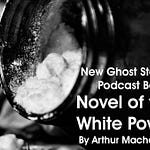You can listen and download the New Ghost Stories Podcast from a number of platforms. And if you enjoy this supernatural podcast, please take a moment to leave a review. It really helps the show.
Poe’s life and legacy is too vast to deal with in a single blog post. But I am an avid collector of trivia. So here are 10 things you might not know about Edgar Allan Poe:
1. The Allan in Edgar Allan Poe comes from his foster parents. Edgar Poe’s father left before he was a year old, and his mother died soon after. He was taken into the care of John and Frances Allan, who later christened him Edgar Allan Poe.
2. His first book, Tamerlane and Other Poems, was published anonymously. Only 12 copies out of the 50 published are known to exist. It’s so rare it was thought for a time to not exist. A copy sold at auction in 2009 went for $662,500.
3. Despite his reputation for being a sickly character, Poe was very athletic. He was a boxer, long-jumper, rower, and swimmer. He gained a local record for swimming 7 miles against the current along the James River in Richmond, Virginia.
4. Amongst Poe’s more successful publications was a book on seashells - The Conchologist’s First Book. The first edition sold out, but Poe was denied royalties until the second edition
5. Poe was the first well-known American writer to earn a living exclusively through writing, but also one of the first American authors to be more famous in Europe than America. He struggled to make a living.
6. Poe had a fascination for cryptography, and advertised in local newspapers for people to send him ciphers to crack. Code-breaking is a key part of The Gold-Bug, a story which netted him £100 in a competition and was the story he was best known for during his life. Two of Poe’s ciphers were not cracked until 1992 and 2000 respectively.
7. Though Poe’s stories and poems did bring him some success, he was best known in his day for literary criticism. His brutal reviews gave him the reputation of being a ‘Tomahawk man’.
8. Poe knew the value of a good literary feud, but it would ultimately cost him his reputation. After his death, his greatest rival, Rufus Wilmot Griswold, quickly produced an obituary which cast Poe as a lunatic, who “walked the streets, in madness or melancholy.” He later created a longer biographical work which portrayed Poe as a drunkard and drug addict. Although fabricated, Griswald’s image of Poe stuck in the popular imagination.
9. From 1949 onward, a mysterious masked person would appear at Poe’s grave in Baltimore to toast the writer on the day of his birth. The ‘Poe Toaster’ would raise a glass to the writer, then leave the bottle and three roses on his grave. The tradition ended in 2009 and the identity (or identities) of the toaster have never been revealed. A new toaster was chosen in secret by the Maryland Historical Society in 2015 to revive the tradition.
10. There was no rest for Poe in the afterlife. A number of psychics channelled his spirit to produce supposedly new works. Poe was notably one of the spirits channelled by clairvoyant Lizzie Doten in her book, Poems of the Inner Life, along with new works from Shakespeare and Robert Burns. Her Poe works were revised versions of his existing works, but given a new positive outlook.
If you’d like to support this UK horror podcast, please consider becoming a patron at Patreon.com/newghoststories












Share this post